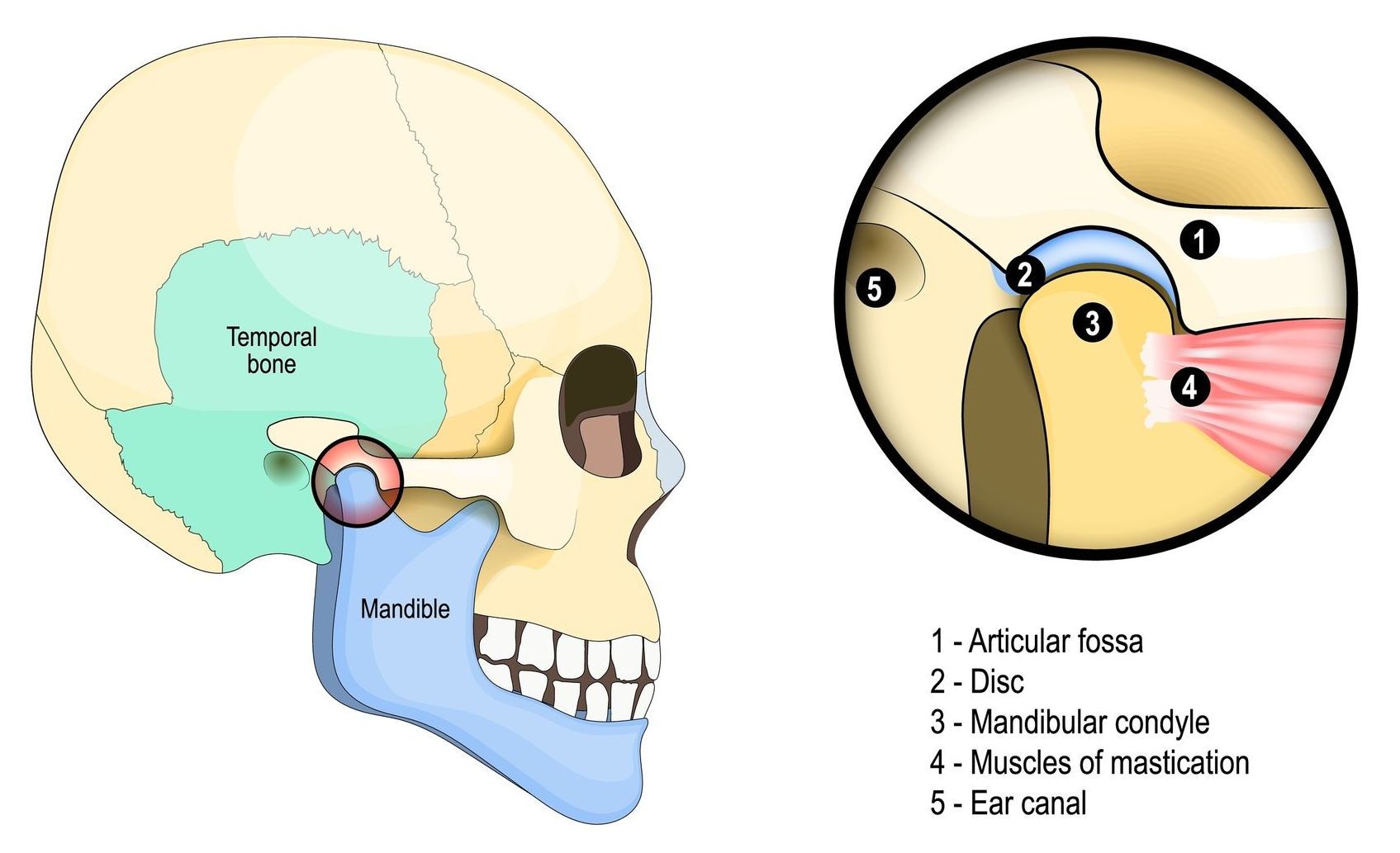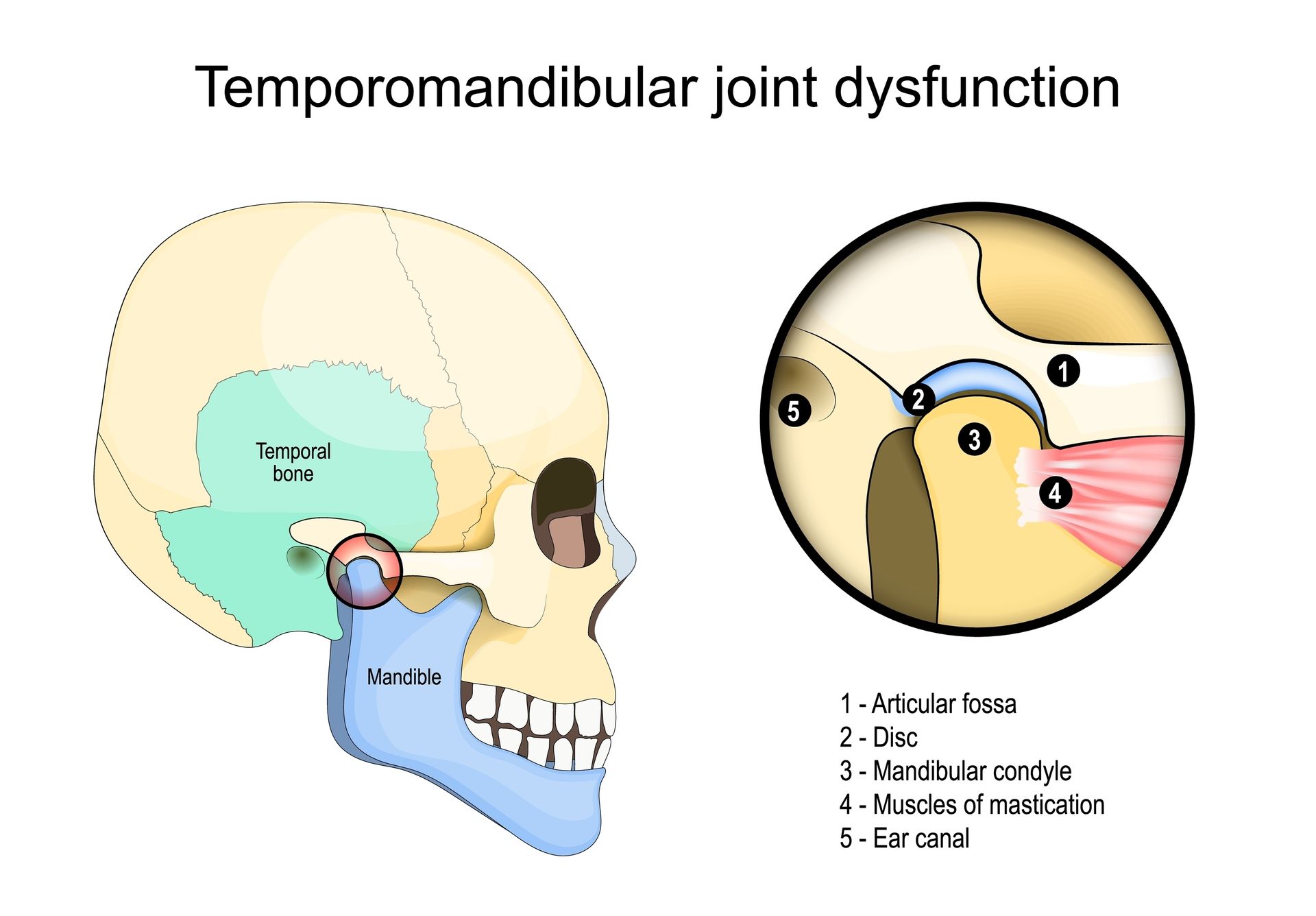Understanding TMJ/TMD
The
temporomandibular joint (TMJ) is a complex joint that connects the mandible (lower jaw) to the temporal bone of the skull. Located just in front of each ear, it allows essential functions like speaking, chewing, yawning, and opening and/or closing your mouth.

TMJ/TMD STATISTICS
_____________
TMJ/TMD is relatively common and can significantly impact a person’s quality of life. It is estimated to affect approximately 10 million Americans, with a prevalence as high as an estimated 31% in adults and 11% in children. Females have a higher prevalence than men with a ratio of 3:1.

When the temporomandibular joint is not functioning properly, it can lead to temporomandibular joint disorder (TMD), which may cause symptoms ranging from mild discomfort to significant functional limitations.
Optimal TMJ function depends on several components, including:
- The health and alignment of the cartilaginous disc, ligaments, socket, and condyle in each temporomandibular joint
- The coordination between the right and left temporomandibular joints
- The function and status of surrounding muscles
- The proper alignment of the teeth (occlusion)
- The function and position of the tongue

Understanding TMJ/TMD
The temporomandibular joint is a complex joint that connects the mandible (lower jaw) to the temporal bone of the skull. Located just in front of each ear, it allows essential functions like speaking, chewing, yawning, and opening or closing the mouth.
Optimal TMJ function depends on several components, including:
● The health and alignment of the cartilaginous disc, ligaments, socket, and condyle in each joint
● The coordination between the right and left joints
● The function and status of surrounding muscles
● Proper alignment of the teeth (occlusion)
● The position and activity of the tongue
When the temporomandibular joint is not functioning properly, it can lead to temporomandibular joint disorders (TMD), which may cause symptoms ranging from mild discomfort to significant functional limitations.

What Causes TMJ Dysfunction?
Adding to the complexity of temporomandibular joint disorders (TMD), various underlying and interrelated factors can play a role in their development and persistence.
These include:
- Sleep-disordered breathing (SDB)
- Postural imbalances
- Direct trauma/whiplash/injury
- Stress
- Hormonal influences
- Cervicogenic misalignments (neck-related joint dysfunction)
- Arthritis
- Ligament laxity
- Neurogenic pain
- Teeth grinding/clenching
- Parafunctional habits such as nail biting, gum chewing, or chewing ice
Understanding and addressing these contributing factors is essential for effective, long-term relief from TMJ dysfunction.
Common Symptoms of TMJ Disorders
Common symptoms include:
- Jaw pain or soreness
- Limited mouth opening and/or movement
- Jaw gets "stuck" or "locked" closed or open
- Painful popping and/or clicking in the joint
- Facial pain
- Teeth sensitivity
- Bite changes
- Ear ringing, stuffiness, and/or sharp pains
- Sudden vision changes
- Vertigo or dizziness
- Sinus pressure or issues
- Headaches and/or migraines
- Limited neck and shoulder mobility
- Numb or tingling fingers

Still have more questions?
Don't let TMJ pain and discomfort impact you any longer!
Real Stories of TMJ Treatment
Hear from our patients about their journeys to relief

Emily R.
After struggling with jaw pain and headaches for years, I finally found relief through Dr. Jenny's comprehensive approach. Understanding the root causes made all the difference!

Mark T.
I never realized how much my TMJ disorder was affecting my daily life until I started treatment. Now, I can enjoy meals and conversations without discomfort.

Sarah L.
The personalized care I received at Southern Indiana TMJ was incredible. Dr. Jenny took the time to explain everything, and I feel empowered to manage my symptoms.

